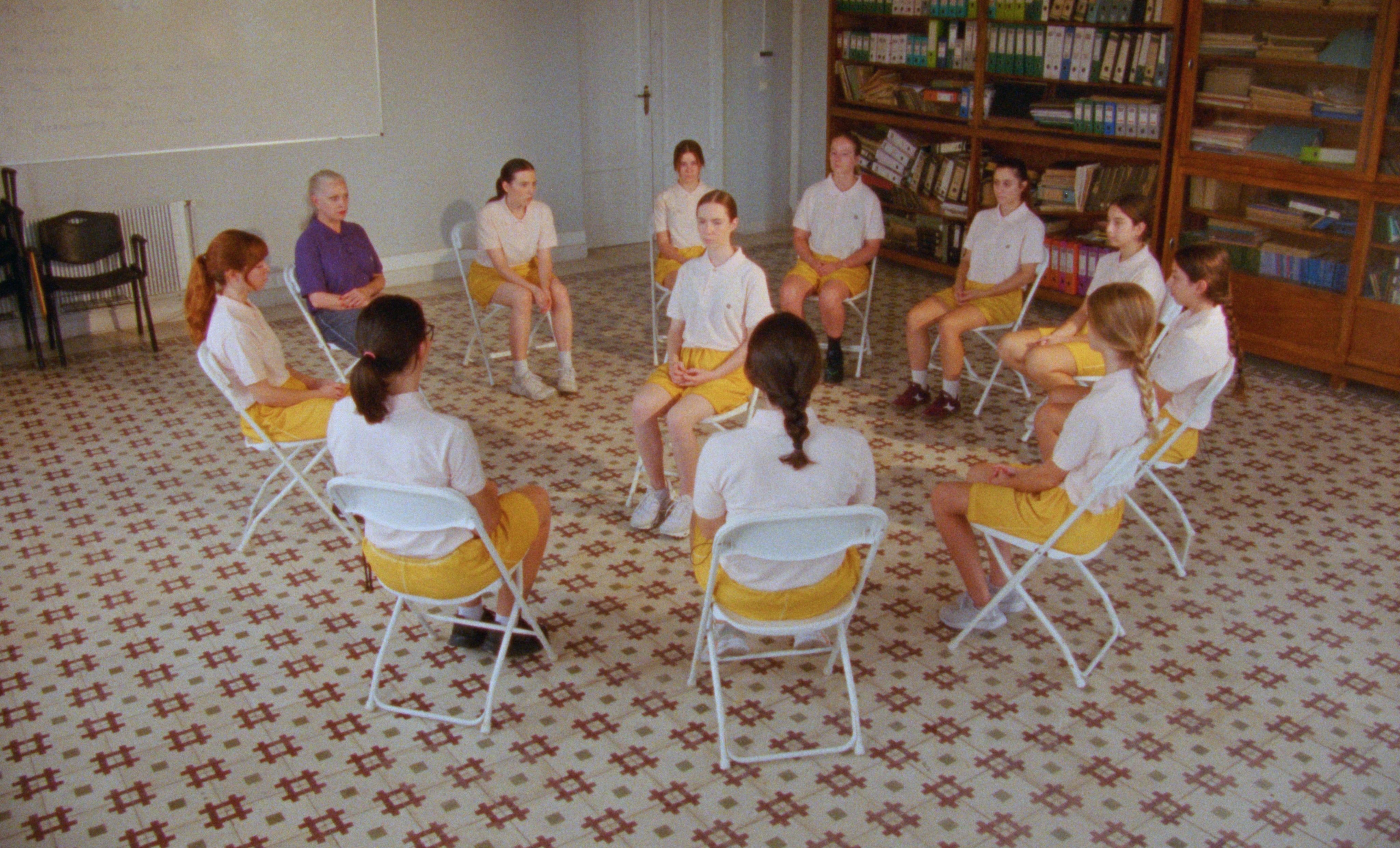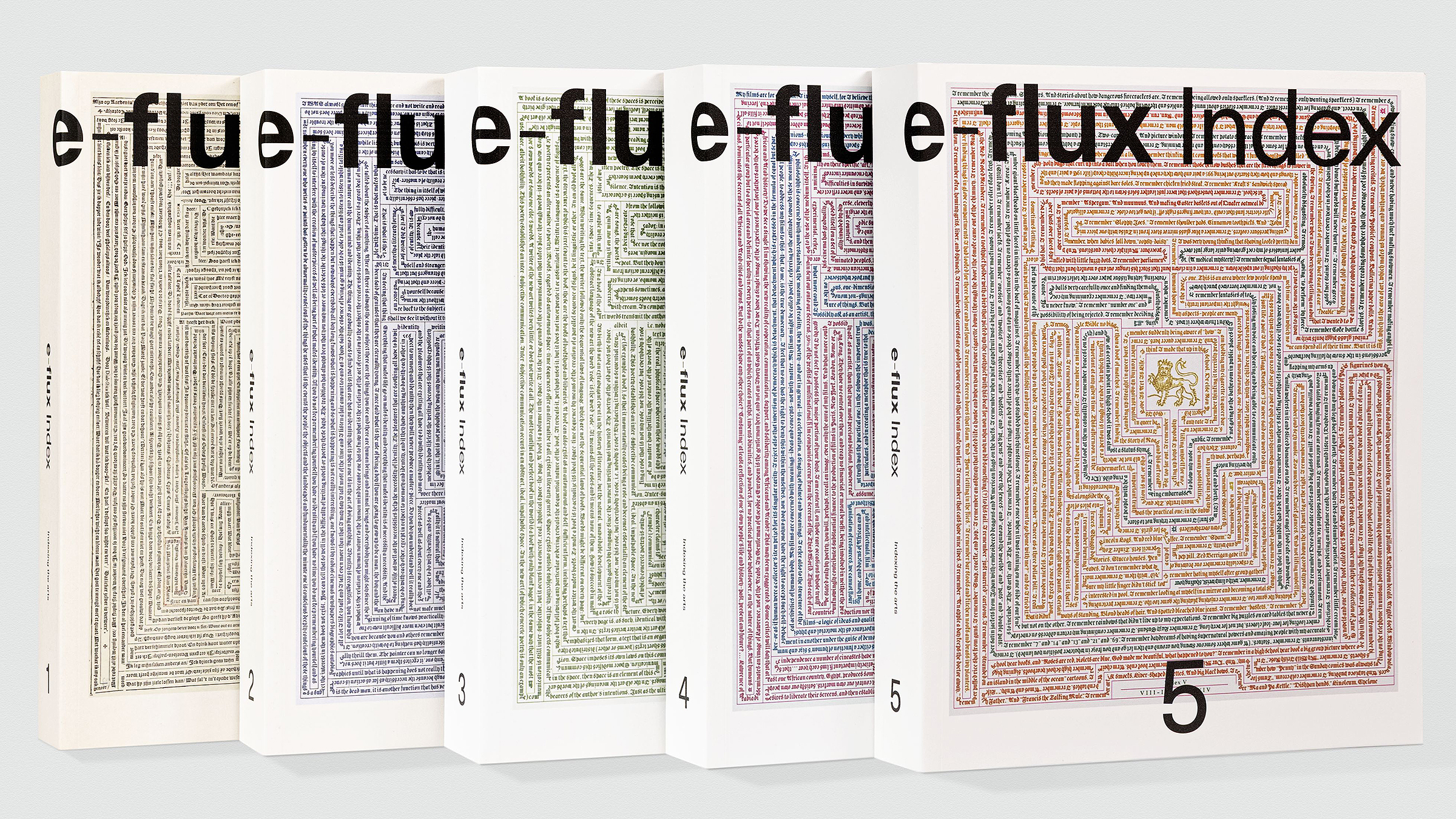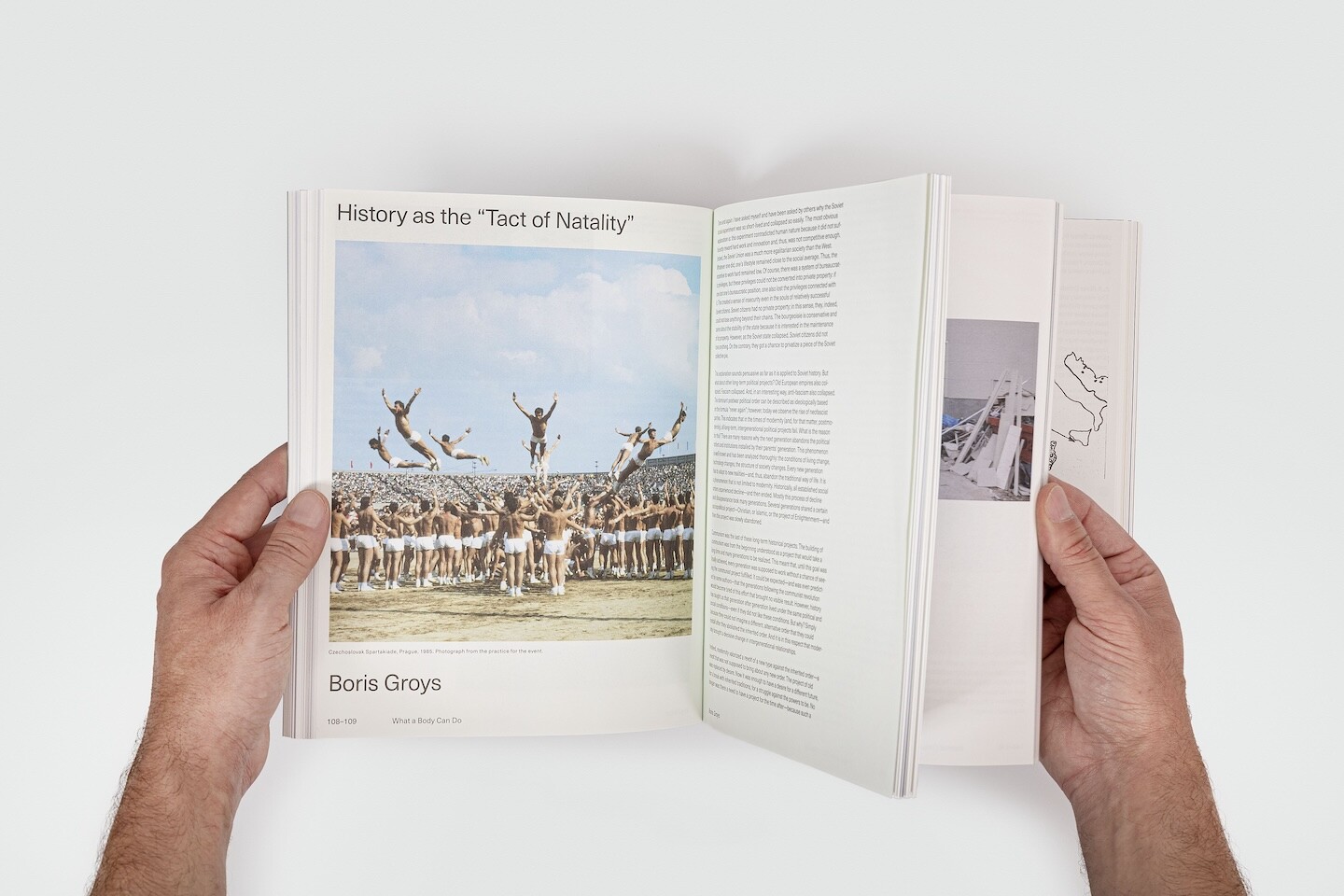Dear friends,
We hope you are healthy and safe.
Starting this week, the editors of e-flux journal will be putting together a series of readers for you: thematic collections of essays from the journal's archive that relate to our current situation. We start with a reader on contagion.
We are also very keen to hear from you and welcome your ideas and suggestions for more e-flux journal readers. As of today, there are over 1,300 essays contained in 108 issues of e-flux journal. All are freely available online here. There are probably infinite ways in which these essays can be grouped, in relation to what we are all dealing with now, and to imagining what is beyond the current situation, on the other side of the pandemic.
Ideally your suggested reader would include a title, a short abstract (100 words), and links to 8–9 e-flux journal texts.
Please send suggestions to the following inbox: reader@e-flux.com
Sincerely,
e-flux journal editors
Reader 1: Contagion
The global pandemic has sent many of us into self-imposed captivity to protect ourselves from others and to protect others from ourselves. Anyone could be the sickness and anyone could be the cure, depending on who you come into contact with and who you don't. If the challenge of biopolitics has always been to understand the sublime administration of productive and vital forces—life and death, economic flows, health, freedom of movement, populations as statistics, etc.—then what on earth are we meant to learn from COVID-19, and from the new world order and disorder that it has imposed on all of us?
These following essays from the past issues of e-flux journal might speak to this question.
Stay tuned for more.
Hito Steyerl—Missing People: Entanglement, Superposition, and Exhumation as Sites of Indeterminacy
Issue #38—“Structural Violence”—October 2012
In 1935, Erwin Schrödinger devised an insidious thought experiment. He imagined a box with a cat inside, which could be killed at any moment by a deadly mixture of radiation and poison. Or it might not be killed at all. Both outcomes were equally probable. But the consequence of thinking through this situation was much more shocking than the initial setup. According to quantum theory, there wasn’t just one cat inside the box, dead or alive. There were actually two cats: one dead, one alive—both locked into a state of so-called superposition, that is, co-present and materially entangled with one another. This peculiar state lasted as long as the box remained closed.
Boris Groys—Entering the Flow: Museum between Archive and Gesamtkunstwerk
Issue #50—December 2013
However, is it possible for a human being to enter the flow, to get access to its totality? On a certain very banal level the answer is, of course, yes: human bodies are things among other things in the world and, thus, subjected to the same universal flow. They become ill, they age, and they die. However, even if human bodies are subjected to aging, death, and dissolution in the flow of material processes, it does not mean that their inscriptions into cultural archives are also in flow. One can be born, live, and die under the same name, having the same citizenship, same CV, and same website—that means remaining the same person. Our bodies, then, are not the only material supports of our persons. From the moment of our birth we are inscribed into certain social orders—without our consent or often even knowledge of this fact. The material supports of our personality are state archives, medical records, passwords to certain internet sites, and so forth. Of course, these archives will also be destroyed by the material flow at some point in time. But this destruction takes an amount of time that is non-commensurable with our own lifetimes. Thus, there is a tension between our material, physical, corporeal mode of existence—which is temporary and subjected to time—and our inscription into cultural archives that are, even if they are also material, much more stable than our own bodies.
Metahaven—Captives of the Cloud: Part I
Issue #37—September 2012
The increasing prominence which cloud-based internet services, social media and VoIP technologies now enjoy over legacy tools of communication shows in how they enable new, virtually cost-free forms of organization. For social movements relying on collective action, this factor has proven to be key. Unsurprisingly, when social media platforms are suddenly “switched off,” their ability to organize can be severely affected. Facebook, in the wake of nationwide anti-austerity protests in the UK in February 2011, deleted the profiles of dozens of political groups preparing to take part in further protests. In doing so, Facebook effectively disabled lawful political activism, which had, for obvious reasons, moved their coordination to the cloud. The reason for the purge is still not known and likely never will be. All the social networking behemoth could utter to justify its behavior was cryptic technospeak. Profiles had “not been registered correctly,” as a Facebook spokeswoman explained. In 2010, UK Prime Minister David Cameron and other Conservative politicians met in London with Facebook founder Mark Zuckerberg. Their admiration was mutual.
Eyal Weizman—665: The Least of All Possible Evils
Issue #38—“Structural Violence”—October 2012
If, as a friend recently suggested, we ought to construct a monument to our present political culture as an homage to the principle of the “lesser evil,” it should be made in the form of the digits 6-6-5 built of concrete blocks, and installed like the Hollywood sign on hillsides or other high points overlooking city centers. This number, one less than the number of the beast—that of the devil and of total evil—might capture the essence of our humanitarian present, obsessed as it is with the calculations and calibrations that seek to moderate, ever so slightly, the evils that it has largely caused.
John Russell—Abysmal Plan: Waiting Until We Die and Radically Accelerated Repetitionism
Issue #46—“Accelerationist Aesthetics”—June 2013
We don’t live long. This is a simple fact—we don’t live long. And “they” love us for this pathetic temporary-ness, squirted out into the violence and control of language and exchange value, and dying shortly afterwards: a few summer holidays, a few children, 3,000 hours on the toilet and 20,000 hours watching TV. Political transformation requires organization and time but we keep dying. A miserable counter-revolutionary brevity, written precisely into the mechanisms of capitalism as the finite expenditure of labor power, chopped up into small circuits of work and pay, repeated again and again (and our dependence upon this repetition) until death. Replayed to us as the aesthetics of the capitalist sublime and/or Speculative Wowism where the brutal cycles of labor and wage are contrasted with the “infinity” of M-C-M and the myth of its serpent-like omnipresence linked up to Romanticism: “wow it’s amaaaaaazing how vast the universe is and how many stars … and the relentless flow of markets in relation to the finite shitness of our lives.”
Ana Teixeira Pinto—Death Wall: Extinction, Entropy, Singularity
Issue #67—November 2015
Capitalism will not fold, all at once. There is, however, an uncanny continuity between Malthus’s insistence on having workers earn less than a living wage and the Chicago school’s policies, be it through the implementation of “sacrifice zones” or allowing just enough unemployment in the economy to prevent inflation from rising above a given target figure (NAIRU). The notion of an oblivious universe where life is born into extinction is its allegorical correlate, a social anxiety elevated into a theory. Because we can hardly afford to live, we imagine that life itself will wither. Rather more difficult is to conceptualize a radically different mode of production, and how to represent the sociopolitical transition required to take us there.
Elizabeth A. Povinelli—Geontologies: The Figures and the Tactics
Issue #78—December 2016
Rather than power, I would propose that what draws the three formations together is a common but once unmarked ontological assertion, namely, that there is a distinction between Life and Nonlife that makes a difference. Now, and ever more globally, this assertion is marked. For example, the once unremarkable observation that all three formations of power (sovereign power, disciplinary power, and biopower) work only “insofar as man is a living being” (une prise de pouvoir sur l’homme en tant qu’etre vivant) today trips over the space between en tant que and tant que, between the “insofar as” and the “as long as.” This once perhaps not terribly belabored phrasing is now hard to avoid hearing as an epistemological and ontological conditional: all three formations work as long as we continue to conceptualize humans as living things and as long as humans continue to exist. Yes, sovereignty, discipline, and biopolitics stage, aestheticize, and publicize the dramas of life and death differently.
Elizabeth A. Povinelli—Geontologies: The Concept and Its Territories
Issue #81—April 2017
As the future of human life—or a human way of life—is put under pressure from the heating of the planet, ontology has reemerged as a central problem in philosophy, anthropology, literary and cultural studies, and in science and technology studies. Increasingly not only can critical theorists not demonstrate the superiority of the human to other forms of life—thus the rise of posthumanist politics and theory—but they also struggle to maintain a difference that makes a difference between all forms of Life and the category of Nonlife. Critical theory has increasingly put pressure on the ontological distinctions among biological, geological, and meteorological existents, and a posthuman critique is giving way to a post-life critique, being to assemblage, and biopower to geontopower. What status should objects have in various Western ontologies? Are there objects, existents, or only fuzzy assemblages? Are these fuzzy assemblages lively too?
Mark Fisher—“A social and psychic revolution of almost inconceivable magnitude”: Popular Culture’s Interrupted Accelerationist Dreams
Issue #46—June 2013
The continuing dominance of capital might have as much to with the failure of popular culture to generate new dreamings as it has to do with the inertial quality of official political positions and strategies. Where the leading edge popular culture of the twentieth century allowed all kinds of experimental rehearsals of what Hardt and Negri call the “monstrous, violent, and traumatic … revolutionary process of the abolition of identity,” the cultural resources for these kind of dismantlings of the self are now somewhat denuded. Michael Hardt has argued that “the positive content of communism, which corresponds to the abolition of private property, is the autonomous production of humanity—a new seeing, a new hearing, a new thinking, a new loving.” The kind of reconstruction of subjectivity and of cognitive categories that post-capitalism will entail is an aesthetic project as much as something that can be delivered by any kind of parliamentary and statist agent alone.










